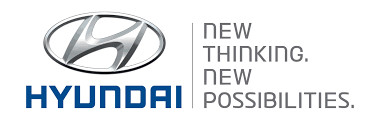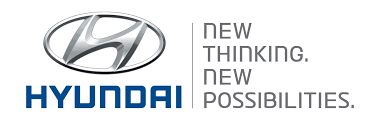
News Agency Reuters reports that from next year, three low-cost sport utility vehicles (SUVs) would be launched in China by Hyundai Motor and affiliate Kia Motors. China is the largest market for them.
Deviating from their strategy of appealing to price-conscious Chinese buyers with older model versions, the making cheaper models, their first for China, marks a shift for the South Korean automakers in their strategy, partly because of the surge of local brands.
According to company data, hit by the rise of Chinese rivals including Great Wall Motor, Hyundai and Kia's China market share slid to a 7-year low of 8.9 percent last year from 10.4 percent in 2014. Data from IHS Automotive showed that the drop in annual sales was the biggest among the top 10 automakers in China.
Hyundai and Kia rank third behind Volkswagen and General Motors even though they were latecomers to China when they began making cars there in 2002. However, taping Hyundai's original formula: sleek, but affordable, smaller models have proved fruitful for Chinese brands which have gained market share. SUVs which are increasingly popular and affordable partly due to the slide in oil prices soon became the new battleground instead of sedans.
Hyundai plans to build a subcompact SUV at its new Chongqing factory in 2018 and a compact, no-frills SUV at its planned factory in Changzhou starting in November 2017, reports Reuters.
Other sources said that Kia also plans to produce its mid-sized SUV in China next year and will follow with its own subcompact, entry-level SUV in 2018.
"After missing out on a segment where Chinese have a head start, Hyundai is rushing to build small SUVs," said one of the sources.
Chinese suppliers would be used to procure cheaper, lower-spare parts and bring down costs by Hyundai and Kia, sources said. Local engineering is also being stepped up at their joint research and development center in the Chinese city of Yantai by the two automakers.
Hyundai said it is taking steps to defend its position against Chinese rivals.
In an emailed response to queries from Reuters, Hyundai responded by saying: “The group is internally examining from various sides to develop differentiated SUVs that give customers a more practical value by continuing in our cost-cutting efforts and plans to realign its line-up to range from lower-priced models to high-end cars to respond to demands from diverse customer bases."
As part of its efforts to be price competitive, it is "developing parts and specifications" that are best suited to local needs, Hyundai also said.
Introducing low-end SUVs could undermine the Korean automakers' quality and brand image, some industry experts warned.
"Going downmarket into low-cost SUVs may actually damage the brand in the long term," said James Chao, Asia-Pacific managing director at IHS Automotive.
In a strategy that helped rapidly boost sales by targeting diverse customer groups, in China, Hyundai and Kia have simultaneously sold two or three generations of the same model.
Three generations of its Tucson SUV were sold in China simultaneously until late last year. The oldest, based on the 2006 model year, is no longer available.
However cheaper Chinese SUVs caught the South Koreans off guard who were positioned between other mass-market foreign brands at the higher end and Chinese brands at the lower end due to their value-for-money image with sedans such as the Elantra.
"Whereas Chinese-brand car and SUV offerings were once looked upon with disdain or rejected outright, they're now increasingly accepted," said Michael Dunne, president of Hong Kong-based consultancy Dunne Automotive.
(Source: www.reuters.com)
Deviating from their strategy of appealing to price-conscious Chinese buyers with older model versions, the making cheaper models, their first for China, marks a shift for the South Korean automakers in their strategy, partly because of the surge of local brands.
According to company data, hit by the rise of Chinese rivals including Great Wall Motor, Hyundai and Kia's China market share slid to a 7-year low of 8.9 percent last year from 10.4 percent in 2014. Data from IHS Automotive showed that the drop in annual sales was the biggest among the top 10 automakers in China.
Hyundai and Kia rank third behind Volkswagen and General Motors even though they were latecomers to China when they began making cars there in 2002. However, taping Hyundai's original formula: sleek, but affordable, smaller models have proved fruitful for Chinese brands which have gained market share. SUVs which are increasingly popular and affordable partly due to the slide in oil prices soon became the new battleground instead of sedans.
Hyundai plans to build a subcompact SUV at its new Chongqing factory in 2018 and a compact, no-frills SUV at its planned factory in Changzhou starting in November 2017, reports Reuters.
Other sources said that Kia also plans to produce its mid-sized SUV in China next year and will follow with its own subcompact, entry-level SUV in 2018.
"After missing out on a segment where Chinese have a head start, Hyundai is rushing to build small SUVs," said one of the sources.
Chinese suppliers would be used to procure cheaper, lower-spare parts and bring down costs by Hyundai and Kia, sources said. Local engineering is also being stepped up at their joint research and development center in the Chinese city of Yantai by the two automakers.
Hyundai said it is taking steps to defend its position against Chinese rivals.
In an emailed response to queries from Reuters, Hyundai responded by saying: “The group is internally examining from various sides to develop differentiated SUVs that give customers a more practical value by continuing in our cost-cutting efforts and plans to realign its line-up to range from lower-priced models to high-end cars to respond to demands from diverse customer bases."
As part of its efforts to be price competitive, it is "developing parts and specifications" that are best suited to local needs, Hyundai also said.
Introducing low-end SUVs could undermine the Korean automakers' quality and brand image, some industry experts warned.
"Going downmarket into low-cost SUVs may actually damage the brand in the long term," said James Chao, Asia-Pacific managing director at IHS Automotive.
In a strategy that helped rapidly boost sales by targeting diverse customer groups, in China, Hyundai and Kia have simultaneously sold two or three generations of the same model.
Three generations of its Tucson SUV were sold in China simultaneously until late last year. The oldest, based on the 2006 model year, is no longer available.
However cheaper Chinese SUVs caught the South Koreans off guard who were positioned between other mass-market foreign brands at the higher end and Chinese brands at the lower end due to their value-for-money image with sedans such as the Elantra.
"Whereas Chinese-brand car and SUV offerings were once looked upon with disdain or rejected outright, they're now increasingly accepted," said Michael Dunne, president of Hong Kong-based consultancy Dunne Automotive.
(Source: www.reuters.com)





